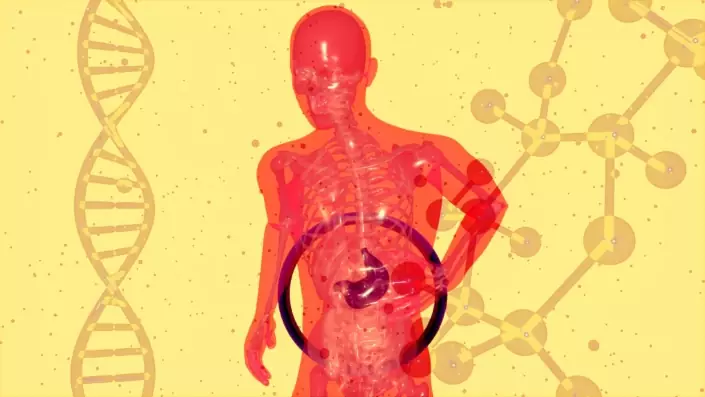
by admin | Mar 29, 2024 | Main
Polycystic Ovary Syndrome, or PCOS, is a common hormonal disorder that affects up to one in ten women of reproductive age. It is characterized by high levels of androgen hormones (DHEA and testosterone), along with poor blood sugar regulation and insulin resistance. Symptoms of PCOS can range from irregular periods to infertility, and it may also lead to weight gain, acne development, thinning hair, and cysts on the ovaries. Causes are many in today’s world, including stress, HPA axis dysfunction, environmental toxins, gut health issues, and the standard American diet which is high in sugars and ultra-processed foods.
One of the most effective ways to manage PCOS is by balancing your blood sugar. We will explore how The Better Weigh nutrition programs and lifestyle changes can help manage PCOS symptoms and improve your overall health.
- Reduces Insulin Resistance: Women with PCOS experience insulin resistance, which results in excess insulin in the bloodstream. The high concentration of insulin triggers the ovaries to produce more testosterone, leading to irregular menstrual cycles and acne. By consuming low glycemic meals, the body needs less insulin, leading to a decrease in insulin resistance.
- Promotes Weight Loss: Women with PCOS often struggle with weight gain. A low glycemic diet can help you lose weight by reducing insulin resistance, improving glucose control, and decreasing cravings. On The Better Weigh nutrition programs, the body switches to burning fat for energy instead of glucose, which can lead to a decrease in stored fat. Studies have shown that a low glycemic meal plan can help women with PCOS lose weight and improve overall cardiovascular health markers like insulin levels, LDL cholesterol, and blood pressure.
- Reduces Androgen Production: Women with PCOS have higher levels of androgens – male hormones – than women without PCOS. This hormonal imbalance can lead to symptoms like acne, unwanted hair growth on the face, chest and back, hair loss on the head, and irregular menstrual cycles. Decreasing their glycemic load can help reduce androgen production by reducing insulin levels, which in turn reduces testosterone production.
- Improves Fertility: One of the most frustrating symptoms of PCOS is infertility. PCOS leads to irregular menstrual cycles, which makes it difficult for women to ovulate and conceive. A low glycemic nutrition program like ours can help improve fertility by balancing blood sugar, reducing insulin resistance and as a result, balance hormones like follicle stimulating hormone (FSH). A meta-analysis of randomized controlled trials showed that a low carb diet can help women with PCOS improve their menstrual cycles and increase the chances of natural ovulation, leading to improved fertility. (PMID: 31885557)
- Provides Nutrient-Dense Foods: According to the PCOS Guidelines by the American Reproductive Medicine Association, nutrition is the number one tool for managing PCOS symptoms. The Better Weigh protocol eliminates ultra-processed foods and refined carbohydrates and replaces them with nutrient-dense foods like leafy greens, healthy fats, and lean proteins. The three structured phases help our clients make lifestyle adjustments to not only achieve results, but also maintain overall health outcomes long-term.
Conclusion
The Better Weigh nutrition programs can be an effective way to manage PCOS symptoms and improve overall health outcomes. By reducing insulin resistance, promoting weight loss, reducing androgen production, improving fertility, and providing nutrient-dense foods, Ideal Protein can help women with PCOS manage their symptoms and improve their quality of life. If you’re struggling with PCOS, we encourage you to reach out to The Better Weigh today and schedule acomplimentary consultation!

by admin | Mar 29, 2024 | Main
What is Cholesterol?
Cholesterol is a type of fat produced by the liver. It is used to build healthy cell membranes, digest fats, manage inflammation, and produce hormones and vitamin D. This essential molecule has been misunderstood to be the cause of cardiovascular disease, leading many health-conscious people to remove it from their diets. However, the story is not that simple.
Should I Reduce Cholesterol in My Diet?
In short – no. Most of the cholesterol in your blood is not from dietary sources, but is actually produced by your body. Therefore, a diet low in dietary cholesterol does not actually address hyperlipidemia (or high serum cholesterol).
Types of Cholesterol
There are a few types of cholesterol. Here are the two we are most concerned with when it comes to risk for disease:
- HDL – high density lipoprotein, aka the “good” cholesterol. High levels of HDL is considered to be protective, because HDL transports cholesterol back to the liver to be excreted from the body.
- LDL – low density lipoprotein, aka the “bad” cholesterol. High LDL can be damaging to the tissues when the molecule is damaged itself.
TIP: The best way to determine if your blood lipids put you at risk for disease is to look at your LDL:HDL ratio. A higher LDL to HDL ratio means a greater risk of heart disease.
A NOTE ON STATINS: If you take a statin to lower your cholesterol, consider supplementing CoQ10, an important nutrient that is depleted by statins. CoQ10 is a naturally occurring antioxidant produced by the body and is responsible for helping convert food into energy. Talk with your doctor about exact dosage before starting supplementation.
While high LDL is considered a warning sign for disease development, what is more important is to consider the full picture. The following factors can cause oxidative stress, which can increase the risk of disease:
- Stress
- Environmental toxins
- Bacterial endotoxins
- Inflammatory lifestyle and diet
Next, we will go into action steps you can take that have been shown by research to decrease LDL cholesterol.
Action Steps
- Focus on Fiber. Fiber comes from plant sources and there are two types: soluble and insoluble. Soluble fiber dissolves in water, forming a “gel” that moves slowly through the intestine, picking up fat and dietary cholesterol along the way. Eventually, these waste products are excreted. An additional benefit of both types of fiber is an improvement in gut health, which may also support healthy cholesterol levels. Men need 30-38 grams of fiber/day, and women need 21-25 grams/day. (PMID: 31126110)
- Joyful Movement. According to the American Heart Association, adults need 150 minutes of moderate-to vigorous-intensity activity every week. At least 2 days of this should be spent on resistance (strength) training to support muscle mass.
- Load up on Antioxidants. Eating colorful fruits and vegetables provide valuable phytonutrients which have been associated with a lower risk of many diseases. (PMID: 7830729)
- Improve Insulin Sensitivity. Insulin resistance may result in decreased HDL, increased LDL and increased triglycerides. (PMID: 15731490)
- Manage Your Stress. We know, everyone is stressed. But chronic stress, if not managed, can cause cortisol to rise and trigger inflammation. This inflammation can increase LDL and lower HDL cholesterol. (PMID: 28471984)
- Include Therapeutic Foods. Many foods have been shown to benefit health due to the compounds present in them. (PMID: 11122780)
- Decrease Inflammation. An anti-inflammatory diet and lifestyle can be a very effective approach to lowering cholesterol. (PMID: 26400429)
Need Guidance Along the Way?
If you want to learn how to apply all of these action steps and specific foods to your unique body and lifestyle, schedule your free discovery call with us today. We are passionate about helping our clients live their best lives and optimize health!

by admin | Mar 29, 2024 | Main
You may have heard the term “fatty liver” and associated it with alcoholism. However, non-drinkers can develop fatty liver too – called nonalcoholic fatty liver disease (NAFLD). In fact, NAFLD is increasingly common in the US and is estimated to affect ¼ of the population. Many people have it but are unaware. In this blog, we will explain what NAFLD is, its causes and symptoms, and what to do about it.
What is Fatty Liver?
A healthy liver contains little to no fat. Fatty liver in both the alcoholic and nonalcoholic type is characterized by excess fat stored in the liver cells, leading to inflammation and scarring. If it gets severe enough, the fat accumulation can cause liver damage. NAFLD is associated with an increased risk of diabetes, heart attack and stroke because the liver isn’t working as it should.
There are four stages of fatty liver:
- Steatosis – harmless build-up of fat in the liver cells. This type usually goes undiagnosed, because there are no symptoms.
- Non-alcoholic steatoheptatis (NASH) – the liver is inflamed at this point.
- Fibrosis – chronic inflammation causes scar tissue (fibrosis) but the liver can still function.
- Cirrhosis – the final and most severe stage when damage is permanent and can lead to liver failure and liver cancer.
Causes of Fatty Liver
Fatty liver disease can be caused by several things:
- Excess body fat, especially around the abdomen
- Insulin resistance
- Standard American Diet
- High blood triglycerides
- High LDL and total cholesterol
- Metabolic Syndrome
- Type 2 Diabetes
- PCOS
- Sleep Apnea
- Hypothyroidism
- Hypopituitarism
- Older age
Symptoms and Diagnosis
Many people with fatty liver disease may not experience any symptoms, which is why it is often called a silent disease. However, if symptoms do occur, they can include fatigue, abdominal pain and swelling, jaundice, red palms, and elevated liver enzymes.
If your doctor suspects NAFLD, they might order a variety of blood work, including liver enzymes, blood lipids, fasting blood sugar, hemoglobin A1C, and even screen for Celiac disease. An ultrasound, MRI, or other imaging procedures may be used to diagnose it. A liver biopsy may also be done to examine the liver tissue.
Treatment Of Fatty Liver
The good news is that fatty liver disease can be treated and even reversed in many cases. The first line of treatment for fatty liver disease is lifestyle changes, including a healthy diet and regular exercise. Losing weight can help reduce the amount of fat in the liver and improve liver function. Losing 10% of your body weight can greatly improve NAFLD, but even as little as 5% can make a difference. Lifestyle changes are most effective when they are done early, before liver disease has caused permanent damage.
Prevention Of Fatty Liver
Prevention is always the best course of action, whether you have been diagnosed with fatty liver disease or not. Maintaining a healthy diet and exercise routine can go a long way in preventing the buildup of excess fat in the liver. Limiting or avoiding alcohol consumption is also important in preventing fatty liver disease.
Conclusion
Fatty liver disease is a prevalent and often misunderstood condition that affects many people around the world. Understanding the causes, symptoms, and treatment options is crucial to improving your liver health and overall wellbeing. By maintaining a healthy lifestyle and avoiding excess alcohol consumption, you can prevent and even reverse fatty liver disease.
If you are ready to change your lifestyle and improve your overall health, including your liver function, we can help! Our structured plans and coaching support can help you achieve optimal health. Schedule a free consultation with us to learn more!

by admin | Mar 29, 2024 | Main
Diabetes is a common chronic disease that affects 37.3 million people in the US. It is an illness characterized by high levels of sugar (or glucose) in the blood, resulting from the body’s inability to produce enough insulin or use it effectively. If you have been diagnosed with diabetes, understanding it is crucial as it can help prevent complications and improve outcomes. In this post, we will explore the various types of diabetes, their causes, symptoms, and available treatment options.
Types of Diabetes
- Type 1 Diabetes: This type of diabetes is usually diagnosed in childhood and is an autoimmune disorder where the body destroys beta cells in the pancreas that produce insulin. People with type 1 diabetes must take insulin injections daily.
- Type 2 Diabetes: The most common type of diabetes, usually seen in adults, is caused by a combination of genetic and lifestyle factors. In type 2 diabetes, the body is either unable to produce enough insulin or becomes resistant to it, leading to high blood sugar levels.
- Gestational Diabetes: This type of diabetes is observed in some women during pregnancy. The high blood sugar levels can affect both the mother and her child, leading to complications and long-lasting effects on health.
Causes
The exact cause of diabetes is not yet fully understood. Researchers believe type 1 diabetes may be linked to autoimmune conditions, certain genes or environmental factors like viruses. Type 2 diabetes is largely preventable and what we consider a lifestyle disease. Physical inactivity, excess body fat, smoking and a diet high in saturated fat, sugar and ultra processed foods can lead to developing diabetes.
Symptoms
The symptoms of diabetes may include frequent urination, increased thirst and hunger, blurred vision, losing weight without trying, irritability, slow wound healing and fatigue. This is your body’s way of warning you that something is wrong. It is attempting to get rid of excess glucose in the blood. If you experience any of these symptoms, it is crucial to see a doctor as soon as possible for diagnosis and treatment.
Diagnosis
If your doctor suspects that you have diabetes, they may order these blood tests. Here are numbers to look for, according to the American Diabetes Association:
- A1C = an average of your blood glucose levels over 3 months. An A1C of greater than 6.5% is considered diabetes. Prediabetes is between 5.7 – 6.4%.
- Fasting Blood Glucose = You must fast for at least 8 hours to have this test done, usually first thing in the morning. If your blood glucose is 126 mg/dl or above, you have diabetes.
- Oral Glucose Tolerance Test (OGTT) = This test measures how your body processes sugar two hours after drinking a glucose-rich drink. Diabetes is diagnosed when your blood glucose is over 200 mg/dl.
- Random Blood Glucose Test = This test is taken at any time during the day. Again, if your blood glucose is over 200 mg/dl, you have diabetes.
Treatment of Diabetes
The treatment for diabetes may include medication, dietary changes, and regular physical activity. People with type 1 diabetes require regular insulin injections to keep their blood sugar levels under control. Type 2 diabetes can often be controlled through lifestyle changes, such as losing weight, eating a nutritious diet, and increasing physical activity. In some cases, medication may also be required.
Conclusion
Understanding diabetes can help you manage the condition and prevent complications. Regular check-ups, a healthy diet, and an active lifestyle can all help manage blood sugar levels and reduce the risk of developing diabetes-related complications. If you have any concerns or symptoms related to diabetes, be sure to consult with your doctor as soon as possible.
If you have been diagnosed with diabetes but are unclear on how to change your lifestyle to manage it, schedule a free nutrition consultation with us! Many of our clients have successfully reduced their A1C and were told by their doctor that they no longer need medications!

by admin | Mar 29, 2024 | Main
Introduction
Living with diabetes can be challenging, but it doesn’t have to be overwhelming. Proper nutrition, physical activity, and other lifestyle factors play significant roles in managing diabetes and preventing further health complications. In this blog post, we’ll discuss general recommendations to make it easier to live with diabetes.
Nutrition
One of the most important aspects of living with diabetes is proper nutrition. A well-balanced meal plan can help control blood sugar levels, maintain a healthy weight, and prevent other health complications. When planning your meals, aim for a balanced diet that includes lean proteins, healthy fats, and complex carbohydrates. You should also avoid consuming processed and sugary foods as these can spike blood sugar levels – not ideal if you have diabetes. It is also important to work with your healthcare provider and nutrition coach to develop a meal plan that works best for you.
If you’re feeling overwhelmed about what nutrition changes to make to manage your diabetes, that’s where The Better Weigh comes in! Schedule your free consultation to learn how we support our clients in reducing their A1C and blood glucose levels!
Joyful Movement
Staying active is another critical factor in maintaining good health when living with diabetes. Physical activity can help lower blood sugar levels, improve cardiovascular health, and promote weight loss. Walking is an easy and effective way to stay active, but other activities like swimming, cycling, or dancing also offer a great way to keep moving. Whatever you choose, make sure it’s something you enjoy and can sustain long-term – that’s why we call it “joyful movement”! It is crucial to speak with your healthcare provider about what type of exercise is safe and effective for you.
Stress Management
Managing stress is essential in controlling diabetes as stress can affect blood sugar levels and lead to unhealthy lifestyle choices. When feeling stressed, try deep breathing exercises, yoga, meditation, or mindfulness practices to calm down and regain control. If you need further support, consider working with a mental health professional. Other ways to reduce stress are to manage your time effectively and schedule time for relaxation and enjoyable activities. Outsourcing tasks, hiring a babysitter, having something to look forward to, and getting out into nature can work wonders too.
Sleep
Insufficient sleep can make it harder for your body to maintain healthy blood sugar levels. Ideally, adults should sleep 7-9 hours every night. Sleep deprivation can increase cravings for refined carbs and sugary foods, which can spike blood sugar. Create a schedule that ensures you get enough sleep. Taking your phone out of the bedroom and other sleep hygiene practices can make it easier to fall asleep.
Regular Check-Ups
Regular check-ups with your healthcare team are critical to managing diabetes. Your healthcare provider will monitor your condition and adjust your treatment plan as required. Appointments should also include check-ups on blood sugar and cholesterol levels, A1C, blood pressure, and eye, dental, and kidney examinations.
Conclusion
Living with diabetes can be challenging, but it is manageable with lifestyle changes. Proper nutrition, regular physical activity, managing stress levels and sleep, and regular check-ups with your healthcare team can help you control your diabetes and live a healthy life. Remember that making small changes to your lifestyle can make a significant difference, and you should always consult with your healthcare provider before making any changes. If you need nutritional support on your journey, schedule your free consultation with The Better Weigh to learn how we can help.
Have prediabetes? Click here to learn more about how to reverse it.





